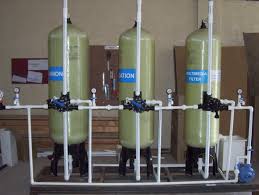The term DM plant stands for demineralization plant. These machines help remove mineral salts from water by removing unwanted ions. By using demineralization, one can produce drinking water of better quality.
Most people in India suffer from health issues because of poor water quality. Therefore, people here need to know about DM plants and their uses. One can also learn about the factors associated with their maintenance. A person can search using keywords like Kent RO service to know more.
Knowing about these machines and their maintenance can save money, time and energy by making wise choices. One can also buy DM plants suitable for them by knowing their types.
Table of Contents
Working Principle Of DM Plants
Most demineralization plants have two resin beds that help to remove unwanted ions. These beds do this by conducting an ion exchange process. These machines work the same way as softeners, except they remove both positive and negative ions with hydrogen ions. The resin beds help maintain water purity by removing unwanted ions and storing them.
Most of the time, DM plants tend to remove sodium and magnesium ions. These also use electrolysis and membranes to remove more unwanted ions and ensure enough purity in water. However, most of these machines’ efficiency depends on their type.
Maintenance of DM Plants
One needs to clean the internal parts of a DM plant and the appliances attached to it for maintenance. However, one might also need to replace such plants’ acids, bases and other chemicals. The significant chemicals, in this case, are hydrochloric acid and sodium hydroxide.
A person might also need to check, replace or repair the electrical connections attached to such plants. One should wash the resin beds and replace them to enable proper functioning.
One can know more about these facts by searching keywords like RO service near me in Delhi, for example. By doing this, one can also know about the faucets and other parts of such machines that need replacing. However, one must always take the help of technicians to repair these things.
Uses of DM Plants
DM plants are most useful in spots where many people need drinking water. The water given by these plants is suitable for drinking, cooking and making beverages. People who own water manufacturing businesses need these plants. These also make water suitable for other purposes. One can prepare high amounts of distilled water fast by using DM plants.
Benefits of Using DM Plants
There are several benefits that one can get by using distilled water. First, these machines can offer the best drinking water if connected to purifiers. Most DM plants can be available in different shapes and sizes. This can allow people to install them in any location.
DM plants generally do not use too many chemicals other than the ones needed. Due to this reason, the ion exchange process happening in these systems is natural enough. This results in the formation of pure drinking water devoid of harmful chemicals.
These machines have unique storage spots that store purified water. DM plants are the perfect alternative to water softeners since these can remove more unwanted ions than the latter. In this way, DM plants tend to prepare water better suited for further purification processes.
The usages of DM plants also tend to reduce production costs. These machines also work with less power consumption. The water from these plants is purely devoid of harmful minerals. These machines have the most efficiency when removing unwanted elements from water. These machines also stabilize the pH levels.
Read Also : Get Custom Stickers Made For Your Business Or Event
How DM Plants Can Effect the Working of RO Purifiers
Since most people in India use RO water purifiers, they should know how using DM plants can benefit them. First, a significant issue regarding reverse osmosis purifiers is that they cannot permanently remove all unwanted particles. Water from these purifiers can still have some amounts of impurities left.
However, one can solve this problem by using DM plants. These plants can remove certain impurities that the RO membranes cannot remove. DM plants can remove ions and negate water hardness, which RO purifiers cannot do.
If one uses these plants along with RO purifiers, they can get water with no harmful particles. This is because the hardness reduction by these plants makes it easy for RO membranes to remove more particles. Therefore, one gets drinking water of the best quality by using a combination of both machines.


















